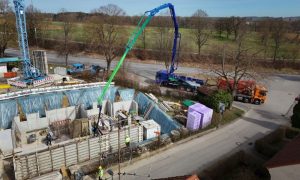Norway to build the world’s first ship tunnel
The 1.7km-long Stad Ship Tunnel to cost $315m and allow 16,000t ships to bypass dangerous stretch of sea

Norway plans to build the first world’s ever full-scale ship tunnel on its west coast, to enable ships to bypass a dangerous and stormy stretch of water.
The tunnel will be 1.7km long, 37m high and 26.5m wide, and will be carved through the mountainous Stad Peninsula, enabling ships to bypass the stormy Stadhavet Sea.
According to an announcement by the Norwegian Coastal Administration (NCA), the construction of the tunnel will cost $315m, with work set to begin in 2019 and end by 2023. The Stad Ship Tunnel is part of the NCA’s Norwegian National Transport Plan, under which transport infrastructure will be built up in the Scandinavian country from 2018 to 2029.
The dimensions of the tunnel will allow ships weighing up to 16,000t to pass through, which means it will be able to accommodate both cruise and freight ships, the NCA said. While tunnels for boats have been built through mountain ranges before, Stad Ship tunnel will be the first to facilitate the passage of freight and passenger ships of such high tonnages.
According to the NCA, the Stadhavet Sea region is the most exposed and dangerous area along Norwegian coast and was selected as an area of particular demand due to its exposure to fierce weather conditions. The nearby Kråkenes lighthouse records between 45 and 106 stormy days per year.
The announcement from the NCA added: “The combination of wind, currents and waves around this part of the coastline make this section a particularly demanding part of the Norwegian coast. The conditions also cause heavy waves to continue for a number of days once the wind has died down. This causes difficult sailing conditions even on less windy days.”
The tunnel will be constructed using conventional blasting methods with underground drilling rigs and pallet rigs. The NCA estimates that around three million square metres of solid rock will be removed to build the structure.

























